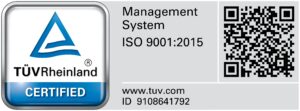By: Ma. Karina Tutanes
Pili Water District is continuously working to modernize its water supply system and reduce the risk of water interruptions as demand rises in concurrence with Pili’s thriving population. To modernize the existing water distribution system, innovation should consist of a smart water facility and distribution service management, leak detection, preventive maintenance, and water quality monitoring.
The District is slowly leaning toward a two-way real-time network that consists of devices that continually and remotely monitor the water distribution system.
Hydraulic Modeling. The Planning and Management Information Systems Office (PMIS) utilizes EPANET software to model water distribution systems. PMIS uses EPANET to design and size new water infrastructure, retrofit existing aging infrastructure, optimize operations of tanks and pumps, reduce energy usage, investigate water quality problems and prepare for emergencies. It is also used to perform simulations of hydraulic and water quality behavior within pressurized pipe networks, which consist of nodes or junctions, pumps, valves, storage tanks, and reservoirs as well as to track the flow of water in each pipe, pressure at each junction, the age of the water and source tracing throughout the network during the simulation period.
The user interface of EPANET provides a visual network editor that simplifies the process of building pipe network models and editing their properties and data.

R-TAP Smart Water. R-Tap is an intelligent supply and pressure management system. It consists of a monitoring and automatic control system for pump stations, reservoirs, and isolation and pressure-regulating valves. Its artificial intelligence uses relevant historical and real-time data to characterize networks and automatically control pumping stations, tank levels, and valves to ensure that operation is optimized round-the-clock. Among the benefits of subscribing to RTAP are the following: 1. accurate management of pressure translating to a significant reduction in NRW; 2. optimization of the operation of pumps translating to energy savings—no excess pressure means reduced power consumption; 3. proper pressure and supply management equate to the increase in the lifespan of pipes, pumps, valves, and other appurtenances; and 4. improved utilization of pumps and other assets means the provision of better service to consumers, especially during peak hours which in turn increases the District’s billed volume.
Geographic Information System. GIS is a key information technology that is utilized by the District in its commitment to transforming into an information-based organization. A GIS is a proven technology that has been in use by many government agencies and organizations as a decision support tool and information management system. It provides the capability to collect, manage, manipulate, analyze, and share information that is location-based. Information collected on the field is layered in a map-based environment to provide a better visual image of the location, patterns, and relationships and then integrated into other technologies utilized by the District, business processes, systems, data, and other applications. In the past years, the District has employed a series of fundamental innovation solutions to not only alleviate potential decrease in water supply and water quality impacts but will continue to envision sustainable solutions to our water challenges through technological innovations.

